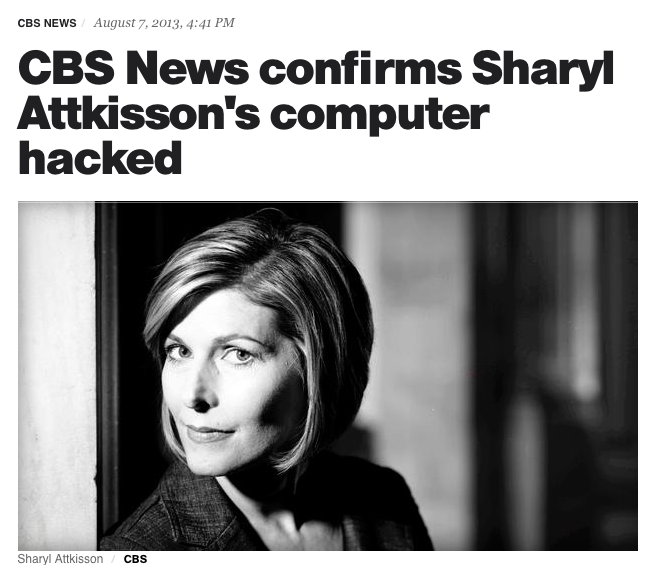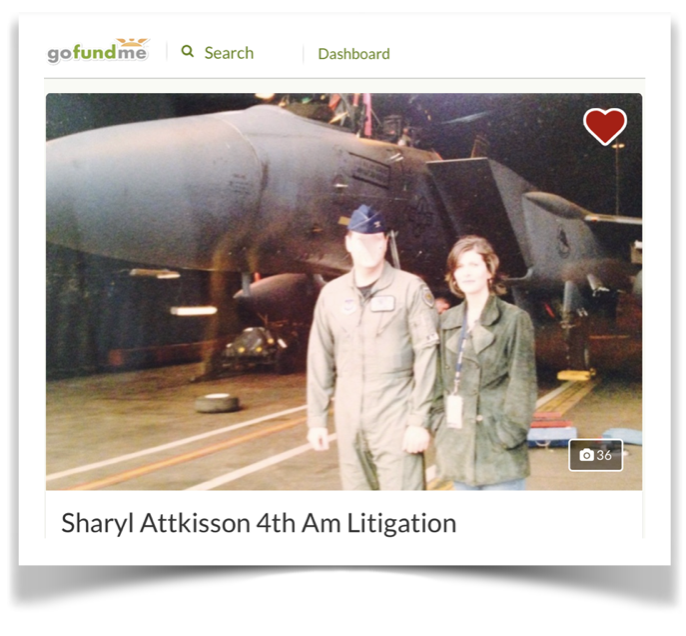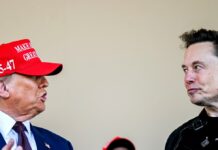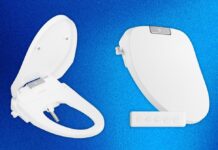The following is a recently-filed motion in Sharyl Attkisson’s case over federal agents spying on her via CBS computer systems. The motion contains some background information.
For more background and documents on the case, click here.

UNITED STATES DISTRICT COURT DISTRICT OF MARYLAND Baltimore Division
| SHARYL THOMPSON ATTKISSON, Plaintiff(s), v. ROSENSTEIN, et al.Defendant(s). |
Civil Action No. 1:20-cv-00068-RDB |
PLAINTIFFS’ MEMORANDUM IN SUPPORT OF OPPOSITION TO DEFENDANT SHAUN BRIDGES’ MOTION
TO DISMISS OR ALTERNATIVELY FOR JUDGMENT ON THE PLEADINGS
Plaintiffs, Sharyl Thompson Attkisson, James Howard Attkisson, Sarah Judith Starr Attkisson, by and through their attorneys, and for their Memorandum in Support of Opposition to Defendant Shaun Bridges’ Motion to Dismiss or Alternatively for Judgment on the Pleadings and in support thereof submits the following:
INTRODUCTION
Defendant Bridges’ motion must be denied for both procedural and substantive reasons. First, Defendant Bridges filed a responsive pleading – his Answer — before then submitting a motion to dismiss under Fed. R. Civ. P. 12(b)(6). The rules state that a 12(b)(6) motion must be made before pleading if a responsive pleading is allowed.1 Defendant Bridges has thus failed to follow the plain language of the rules and was waived his rights under 12(b). Second, Defendant
1 See Fed. R. Civ. P. 12(b).
1
Case 1:20-cv-00068-RDB Document 64 Filed 12/03/21 Page 2 of 17
Bridges’ motion under Fed. R. Civ. P. 12(h)(2)(b), also fails procedurally because Rule 12 only allows such relief to be sought under Rule 12(c) upon the “closing of the pleadings”, which has not yet occurred. Lastly, the substantive arguments are without merit because when this Court looks at the operative complaint in the light most favorable to the Plaintiffs, accepting as true all well-pleaded facts therein alleged, the Plaintiffs have shown they are entitled to relief.ARGUMENT
A. PROCEDURAL BACKGROUND RELEVANT TO THE MOTIONS
1. On January 10, 2020, Plaintiffs original Complaint was filed (Doc. 1) challenging, under the Fourth Amendment to the United States Constitution and the Electronic Communications Privacy Act (ECPA), 18 U.S.C. §§ 2511 & 2520, the Defendants’ unauthorized and illegal surveillance of the Plaintiffs’ laptop computers and telephones from 2011-2014. The constitutional claim was brought pursuant to Bivens v. Six Unknown Named Agents of Federal Bureau of Narcotics, 403 U.S. 388 (1971), which permits federal government officials to be sued for unconstitutional searches and seizures in violation of the Fourth Amendment. Defendants were sued in their individual capacities.
2. The filed complaint (Doc. 1) alleged that Defendant Bridges was a citizen and resident of Virginia with his then-current address at the FCI Petersburg Medium prison facility in Virginia. (Doc. 1, ¶ 14)
3. The complaint alleged that Defendant Bridges, as well as other agents of the U.S. Government, worked with Defendant Rosenstein in Maryland and were personally involved in conducting unlawful surveillance and hacking of computer systems belonging to the Plaintiffs in violation of the Constitution. (Doc. 1, ¶ 17)
2
Case 1:20-cv-00068-RDB Document 64 Filed 12/03/21 Page 3 of 17
4. Defendant Bridges specific role as Special Agent with the U.S. Secret Service, operating out of the Baltimore Field Office, during the relevant time frames was set forth, including the explanation of his conviction for corruption and his prison sentence. (Doc. 1, ¶ 18)
5. The complaint alleged that Defendant Bridges, along with others at the multi- agency task force in Baltimore, were ordered by Defendant Rosenstein to conduct the illegal surveillance and that each, including Bridges, were personally involved in the operation (Doc. 1, ¶ 28), and that the actions negligently, recklessly, and intentionally caused Plaintiffs’ rights to privacy to be violated, trespass to occur, all without probable cause or other legal justification, all in violation of Plaintiffs’ constitutional rights. (ECF Doc. No 1, ¶¶ 89-91)
6. The complaint stated claims for violations of the fourth amendment (Count I – Doc. 1 at page 28) and violations of the Electronic Communications Privacy Act (“ECPA”) (Count II – ECF Doc. No. 1 at page 29).
7. It is undisputed that Defendant Bridges was appropriately served with the complaint and that no responsive pleading was ever submitted. (See ECF Doc. No 42)
8. Following the filing of a motion to dismiss by Defendant White on January 31, 2020 (See ECF Doc. No 49), an Amended Complaint was filed on February 14, 2020. (See ECF Doc. No 15)2
9. A motion to dismiss was filed by Defendants Henry and Rosenstein on April 13, 2020. (See ECF Doc. No 17)
2
without prejudice the motion to dismiss of Pro Se Defendant Ryan White. (ECF Doc. No. 26)
This motion was later disposed of by a memorandum order finding as moot and denying 3
Case 1:20-cv-00068-RDB Document 64 Filed 12/03/21 Page 4 of 17
10. Correspondence from Defendant Ryan White was lodged on Pacer in November 2, 2020 (Doc. 27), but the record reflects that mail directed to Ryan White was returned undeliverable on November 25, 2020. (See ECF Doc. No 28)
11. On March 16, 2021, the Court entered a memorandum opinion and an order granting the motion of Defendants Rosenstein and Henry to dismiss the Complaint as to them. The Court also granted the Plaintiffs until March 31, 2021 to file a Second Amended Complaint. (See ECF Doc. No 49)
12. On March 31, 2021, the Plaintiffs filed a Second Amended Complaint (“SAC”), which was accepted, after correction, on April 5, 2021. (See ECF Doc. No 35) The SAC alleged that Defendant White had come forward and for the first time revealed that he personally participated in the illegal operation aimed at Plaintiffs (Doc. 35, ¶ 63); that his work out of the Baltimore Field Office during the relevant time period included work with Defendant Bridges, and others, to conduct the illegal surveillance complained of, including use of government resources, and that the planning, conducting and implementation of the surveillance occurred in Maryland (Doc. 35, ¶ 66); that Defendant Bridges role was supervised by then Defendant Henry of the FBI (Doc. 35, ¶ 67); that he and Defendant Bridges and then-Defendant Henry used software programs developed for the specific purpose of conducting the illegal surveillance (Doc. 35, ¶ 68); that Defendant White worked directly with Defendant Bridges in violating Plaintiffs’ rights (Doc. 35, ¶ 69); that Defendant Bridges informed Defendant White that the work assignment was on the “dirty side” and was one that “they did not want to get public” (Doc. 35, ¶ 69); and that although others were also involved in the illegal activity, Defendant White and Defendant Bridges were both personally involved in accessing, on multiple occasions, Plaintiffs computer systems as part
4
Case 1:20-cv-00068-RDB Document 64 Filed 12/03/21 Page 5 of 17
of the project they were assigned to carry out. (Doc. 35, ¶ 70-71) Paragraphs 72-79 likewise provide more details of Defendants White and Bridges activities surrounding the project.
13. On August 16, 2021, the Plaintiffs filed motions for default judgment as to Defendants White and Bridges. (See ECF Doc. No 37) These motions are still pending.
14. On August 26, 2021, Defendant Bridges filed a motion for extension of time to answer the Second Amended Complaint (See ECF Doc. No 40), and on September 20, 2021 (See ECF Doc. No 49), sought a second extension. The first motion for extension was granted.
15. On September 27, 2021, Defendant Bridges submitted an Answer to the Second Amended Complaint. (ECF Doc. No. 48) Defendant Bridges answer was captioned “Pro Se Answer and Defenses”, and asserted defenses that the Second Amended Complaint (“SAC”) failed to present any viable legal claim upon which relief could be granted; laches; statute of limitations; jurisdiction; that the alleged conduct was outside of the course and scope of employment and thus qualified immunity attached; and a general denial of wrongdoing.
16. On November 12, 2021, Defendant Bridges filed the present Motion to Dismiss. (See ECF Doc. No 49)
17. On October 4, 2021 Plaintiffs filed a motion to strike answer and renewed motion for default. See ECF Doc. No 49. Neither of those motions have been ruled on, and both remain pending as of the date of this filing.
18. Plaintiffs will be greatly prejudiced by these two motions not being resolved prior
to Bridges’ motion to dismiss. It is likely that one or both of those pending filing will make this
issue moot and therefore judicial economy will be better served by first resolving the default before
taking up further motions in regards to Defendant Bridges.
B. DEFENDANT BRIDGES IS NOT PROCEDURALLY ENTITLED TO RELIEF PURSUANT TO FED. R. CIV. P. 12(B)(6) OR 12(C)
5
Case 1:20-cv-00068-RDB Document 64 Filed 12/03/21 Page 6 of 17
As noted, Defendant Bridges never answered or otherwise appeared after being served with the original complaint. On March 2, 2021, Plaintiffs filed their SAC – as per the Court’s Order — and on September 28, 2021, Defendant Bridges filed his pro se Answer. The subject motion to dismiss was not filed until November 12, 2021, well over a month after Defendant Bridges appeared pro se and answered.
Although Defendant Bridges failed to answer the original complaint, “[w]here a plaintiff files an amended complaint, the defendant enjoys a renewed opportunity to answer the complaint or, alternatively, to file a motion under Rule 12(b). See 5C Charles Alan Wright & Arthur R. Miller, Federal Practice and Procedure § 1361 (3d ed. 2004) (“[W]henever the court allows a party to amend its pleading, the opposing party’s right to interpose a Rule 12(b) motion is extended or revived accordingly.”). If the defendant elects to answer, the defendant waives the renewed opportunity to file a Rule 12(b) motion.2 See Fed. R. Civ. P. 12(b) (“A motion asserting any of these defenses must be made before pleading if a responsive pleading is allowed.”).”3
Here, Defendant Bridges chose to answer the SAC rather than filing a motion under Rule 12. Rule 12(b) makes clear that every defense to a claim for relief in any pleading must be asserted in the responsive pleading if one is required. But a party may assert the following defenses by motion:
(1) lack of subject-matter jurisdiction; (2) lack of personal jurisdiction;
(3) improper venue;
(4) insufficient process;
(5) insufficient service of process;
(6) failure to state a claim upon which relief can be granted; and
3 Eagle All. v. Quattrone, No. CV JKB-15-2695, 2016 WL 11641363, at 1 (D. Md. Feb. 5, 2016). 6
Case 1:20-cv-00068-RDB Document 64 Filed 12/03/21 Page 7 of 17
(7) failure to join a party under Rule 19.
A motion asserting any of these defenses must be made before pleading if a responsive
pleading is allowed. (emphasis added)
Although Defendant Bridges’ answer includes a boilerplate reference to his purported
defenses, including language consistent with the defense of failure to state a claim, no substantive argument was included and no motion was filed before filing of the answer.
Despite Defendant Bridges’ claims to have preserved the right to bring such a delinquent filing, merely reciting the defense of failure to state a claim in his answer did not absolve him of his obligation under the rule. 4 In these circumstances Courts have treated such an action as a prayer for relief under rule 12(c). “When an answer filed before a Rule 12(b)(6) motion raises the defense of a failure to state a claim for relief, a number of courts recharacterize the Rule 12(b)(6) motion as a Rule 12(c) motion. See Puckett v. U.S., 82 F.Supp.2d at 663 (if defendant included defense in answer, “thereby giving notice, then courts generally allow Rule 12(b)(6) motions filed after the answer” and consider them “as a Rule 12(c) motion for judgment on the pleadings”); Provident Life and Casualty Insurance Co. v. Ginther, 1997 WL 9779, at 1 (W.D.N.Y. Jan. 3, 1997)”5 Bridges’ motion must therefore be viewed as a request for judgment on the pleadings.
Viewing the current motion under the lens of Rule 12(c), the plain language does not allow for such a judgment on the pleadings until the pleading are closed. Here, the pleadings are not closed as Defendant White has yet to answer the SAC. When this situation is presented, courts have found it impermissible to allow a party to assert a motion for judgment on the pleadings. See Horen v. Bd. of Educ. of Toledo City Sch. Dist., 594 F. Supp. 2d 833, 840 (N.D. Ohio 2009) (“If a
4
Under Rule 12(b)(6) “a motion raising the defense of failure to state a claim upon which relief may be granted
must be made before the service of a responsive pleading.” Puckett v. U.S., 82 F.Supp.2d 660, 663 (S.D.Tex.1999).
5
Lu v. Menino, 98 F. Supp. 3d 85, 93 (D. Mass. 2015). 7
Case 1:20-cv-00068-RDB Document 64 Filed 12/03/21 Page 8 of 17
case has multiple defendants, all defendants must file an answer before a Rule 12(c) motion can be filed.”); Watson v. Cty of Santa Clara, No. 06-04029, 2007 WL 2043852, at *1–2 (N.D. Cal. July 12, 2007) (denying Rule 12(c) motion as premature where not all defendants had answered plaintiff’s second amended complaint).6 (emphasis added)
There is one exception to this rule, however, in that some courts have found it within their discretion to allow such a premature filing, but those cases are dissimilar and distinguishable from the circumstances now before the Court. For example, a court allowed what it described as a “premature filing” when the cause of action only pertained to that singular defendant and plaintiffs failed to object to the timing of the 12(c) motion.7 Here, Defendant Bridges’ untimely motion seeks a remedy that is not exclusive to himself. If allowed to go forward, and if successful, the motion would effectively terminate Plaintiffs’ action against Defendant White before he has even answered the SAC. This is especially true where, as here, Defendant Bridges entire argument seems to allege that factual plausibility does not exist because of Defendant White’s lack of credibility.
Equally significant is the fact that motions for default are currently pending against both Defendants White and Bridges, and Plaintiffs are still actively attempting to serve the SAC on Defendant White using alternative service as per the Court’s instructions.
C. DEFENDANT’S SUBSTANTIVE ARGUMENTS ARE WITHOUT MERIT
6 Language Drs., Inc. v. MCM 8201 Corp., LLC, No. 20-CV-1755, 2021 WL 718940, at 2 (D. Md. Feb. 24, 2021) 7 Watson v. Cty. of Santa Clara, No. C-06-04029 RMW, 2007 WL 2043852, at *1 (N.D. Cal. July 12, 2007) citing Johnson v. Dodson Pub. Sch., 463 F.Supp.2d 1151, 1156 (D.Mont.2006) (finding defendant’s motion “technically was premature” but allowing it because it concerned a cause of action that named only that defendant and plaintiffs had not raised a timeliness objection).
8
Case 1:20-cv-00068-RDB Document 64 Filed 12/03/21 Page 9 of 17
Contrary to Defendant Bridges’ arguments, the Plaintiffs’ SAC satisfies the requirements of Rule 8(a). If the Court chooses to look past the procedural deficiencies of Defendant Bridges’ motion, the substantive arguments are nonetheless without merit.
At this pleading stage, the court must consider all well-pleaded allegations in a complaint as true, see Albright v. Oliver, 510 U.S. 266, 268 (1994), and must construe all factual allegations in the light most favorable to the plaintiff, see Harrison v. Westinghouse Savannah River Co., 176 F.3d 776, 783 (4th Cir. 1999) (citing Mylan Labs., Inc. v. Matkari, 7 F.3d 1130, 1134 (4th Cir. 1993)). Fed. R. Civ. P. 8(a) does not “require heightened fact pleading of specifics.”8 The complaint’s sufficiency is still construed “in the light most favorable to the Plaintiffs, accepting as true all well-pleaded facts alleged, and drawing all possible inferences in their favor.”9 A pleading simply must contain a “short and plain statement of the claim showing that the pleader is entitled to relief.”10
Here, the SAC satisfies the requirements of Rule 8(b). Plaintiffs have factually pled her work as an investigative journalist, which included reporting of facts critical of the federal government;11 that Ms. Attkisson was alerted by a member of the Alcohol Tobacco Firearm and Explosives Agency (“ATF”) that the government was actively attempting to identify the source of her reporting – whistleblower(s);12 the electronic anomalies Plaintiffs experienced;13 and the multiple detections of electronic intrusions detected on Plaintiffs devices that bore government identifiers;14 and most importantly, that separate defendant White identified himself and Defendant Bridges as personally conducting the unlawful intrusions and surveillance of the
8 9
11 12 13 14
Bell Atl. Corp v. Twombly, 550 U.S. 544, 570 (2007). Tamayo v. Blagojevich 526 F.3d 1074, 1081 (7th Cir. 2008).
See Doc. No. 35 at para 10-12, 20-21. See Doc. No. 35 at para 13.
Id. at ¶¶ 15 et seq.
Id. at ¶¶ 30 et seq.
10
Ashcroft v. Iqbal, 556 U.S. 662, 678, 129 S. Ct. 1937, 1949, 173 L. Ed. 2d 868 (2009).
9
Case 1:20-cv-00068-RDB Document 64 Filed 12/03/21 Page 10 of 17
Plaintiffs.15 In fact, the SAC goes into explicit detail about how the surveillance was carried out; when; where; using what equipment; who was involved; who supervised the illegal activity directed at the Plaintiffs; and the motives behind the illegal activity, all facts that came from the mouth of one of the participants in the illegal activity.
As stated above, the court must consider all well-pleaded allegations in a complaint as true and thus Plaintiffs have met the burden required by law as to Count I and II of SAC.16
The Defendant’s argument relies heavily on attacking the credibility of Defendant White’s statements along with the assertion that Department of Justice Office of Inspector General report somehow makes the SAC implausible. Although neither of these are appropriate topics for discussion at the pleading stage, the SAC specifically notes, which Defendant Bridges ignores, that the IG report was based on little more than checking with the FBI, who denied knowledge of the surveillance (Doc. 35, ¶ 40); that the IG never reviewed the CBS forensic expert’s report finding evidence of the actual intrusion (Doc. 35, ¶ 44); that the IG never even inspected the CBS Toshiba computer assigned to Ms. Attkisson (Doc. 35, ¶ 44); nor did the IG ever review the independent computer forensics work analyzed of the Toshiba computer and other electronic devices (Doc. 35, ¶ 44); that at Ms. Attkisson’s request, the IG did examine her family Apple desktop computer and found a “great deal of suspicious activity” present (Doc. 35, ¶ 49-50); but that the scope of the IG’s investigation had been “narrowed” by a party they refused to name (Doc. 35, ¶ 50). On May 6, 2013, an official with the United States Department of Justice Inspector General’s office called Ms. Attkisson and stated that he had checked with the FBI, and the FBI denied any knowledge of any operations concerning Ms. Attkisson’s computers or phone lines. The official also stated that there was no PATRIOT Act related order authorizing surveillance of
15 16
Id. at ¶¶ 60-79.
Bell Atl. Corp v. Twombly, supra note 7, at 570.
10
Case 1:20-cv-00068-RDB Document 64 Filed 12/03/21 Page 11 of 17
Ms. Attkisson. Nonetheless this has no bearing on the legal standard to survive a judgment on the pleadings.
In conclusion, ultimately, “a defendant may not prevail on a motion for judgment on the pleadings if there are pleadings that, if proved, would permit recovery for the plaintiff.”17
Defendant Bridges likewise asserts a right to dismissal based on issue preclusion and/or collateral estoppel. The claims are without merit.
The Fourth Circuit has held that for collateral estoppel or issue preclusion to apply, the party asserting the doctrine (herein Defendant Bridges) must establish the following five elements: (1) the issue or fact is identical to the one previously litigated; (2) the issue or fact was actually resolved in the prior proceeding; (3) the issue or fact was critical and necessary to the judgment in the prior proceeding; (4) the judgment in the prior proceeding is final and valid; and (5) the party to be foreclosed by the prior resolution of the issue or fact had a full and fair opportunity to litigate the issue or fact in the prior proceeding. See Microsoft Corporation Antitrust Litigation, 355 F.3d 322, 326 (4th Cir.2004) (emphasis added); Ramsey v. U.S. Immigration & Naturalization Service, 14 F.3d 206, 210 (4th Cir.1994)….18 If the Defendant fails to establish any one element, collateral estoppel will not bar the Bivens action against him. Here, Defendant Bridges fails to clearly establish both elements one and two.
In the Fourth Circuit, the Plaintiffs made two separate legal arguments regarding the viability of their Fourth Amendment claim brought pursuant to Bivens v. Six Unknown Named Agents of Fed. Bureau of Narcotics, 403 U.S. 388 (1971). First, they argued that the U.S. Supreme Court’s decision in Ziglar v. Abassi, 137 S. Ct. 1843 (2017), did not prevent a Bivens claim against defendants Eric Holder and Patrick Donahoe. Second, they argued that, “even if this Court were to decide that the
Somerville v. W. Town Bank & Tr., No. CV 19-490 PJM, 2020 WL 8256358, at *1 (D. Md. Dec. 4, 2020) Intell. Ventures I LLC v. Cap. One Fin. Corp., No. PWG-14-111, 2015 WL 5201356, at *2 (D. Md. Sept. 4,
17
citing BET Plant Servs., Inc. v. W.D. Robinson Elec. Co., 941 F. Supp. 54, 55 (D.S.C. 1996).
18
2015), aff’d in part, 850 F.3d 1332 (Fed. Cir. 2017)
11
Case 1:20-cv-00068-RDB Document 64 Filed 12/03/21 Page 12 of 17
claims against Holder and Donahoe are an extension of Bivens and thus blocked by Ziglar, the claims against the John Does should still proceed.” Brief of Appellants at 30 n.4, Attkisson v. Holder, 925 F.3d 606 (4th Cir. 2019) (No. 18-1677).
The Fourth Circuit only decided and necessarily determined that dismissal of a Bivens remedy pursuant to Ziglar was proper “with respect to Holder and Donahoe.” 925 F.3d at 622 (emphasis added).19 The Fourth Circuit did not rule on whether a plausible Fourth Amendment claim exists against the John Doe defendants, however, remained unresolved and open to further factfinding. Id. at 628.
Likewise, when this Court ruled that collateral estoppel barred a Bivens action against former defendants Rosenstein and Henry; the ruling did not include any potential Bivens claim against the John Doe Defendants and Plaintiffs were granted leave to refile their complaint against those individuals. Plaintiffs have since identified Defendant Bridges as one of those government actors that actually carried out the unlawful intrusions; an individual agent acting under the color of federal authority and therefore not similarly situated to those high level individuals who have been the focus of any prior rulings.
Because the Bivens/Ziglar analysis is highly fact-specific, “any changes in facts essential to the judgment” renders the Fourth Amendment issue not identical to the one previously litigated. Montana, 440 U.S. at 159. For example, in Tuttle v. Arlington County Sch. Bd., 195 F.3d 698, 704 (4th Cir. 1999), cert. dismissed, 529 U.S. 1050 (2000), an earlier suit had enjoined the School Board from implementing its admissions program, in part because diversity was deemed not to be a compelling government interest. 195 F.3d at 704. Yet, the court permitted the School Board to re-raise this issue in a subsequent case concerning a new admissions policy. Id. As the court recognized, because the
Indeed, the Fourth Circuit opinion refers specifically and exclusively to the Bivens claim against Holder and Donahoe no less than seven times over the course of its two-page discussion of the issue. Attkisson v. Holder, 925 F.3d 606, 620–22 (4th Cir. 2019).
19
12
Case 1:20-cv-00068-RDB Document 64 Filed 12/03/21 Page 13 of 17
underlying admissions policy was different from the original policy, the issue was “hardly identical” to the issue decided in the previous case. Id. As stated, Defendant Bridges, nor anyone in a similar position, has been the subject of previous litigation. This fact alone precludes collateral estoppel from applying to the Bivens claim. The Defendant’s argument fails to meet the first element of collateral estoppel, as it is not an identical fact that has been previously litigated.
Secondly, in order to assert a valid Bivens claim, a plaintiff must prove two elements: “(1) a violation of … constitutional rights, (2) by agents acting under color of federal law.” Goldstein v. Moatz, 364 F.3d 205, 210 n. 8 (4th Cir. 2004).20
Here, there can be no reasonable dispute that Ms. Attkisson, a national news reporter for CBS, was engaged in constitutionally protected conduct as part of her job as a journalist. The Complaint very clearly sets forth convincing evidence, including forensic, internal email, internal documents, and defendant who identified himself and Defendant Bridges as personally being involved in violating the Fourth Amendment rights of the Plaintiffs. The facts plead are not only plausible, they are convincing and supported by forensics, independent facts, documents, and now a participant’s (Defendant White’s) own admissions, all of which was in direct violation of Plaintiffs’ Constitutional rights and the laws cited herein.
The second element is also clearly met by the facts pled – and presumed to be true – in the operative complaint. Paragraph 66 states:
When Defendant WHITE voluntarily came forward he admitted to Plaintiffs’ representatives that he worked out of the Baltimore Field Office during the relevant time period; admitted that Rod Rosenstein supervised and controlled the activities of the Silk Road Task Force, along with both he and Defendant BRIDGES; admitted that he and Defendant BRIDGES worked together with others to conduct the illegal surveillance complained of herein; and admitted that the
20 Brown v. U.S. Dep’t of Just., No. CV PJM 16-3541, 2017 WL 3149796, at *3 (D. Md. July 25, 2017), aff’d as modified sub nom. Brown v. United States Dep’t of Just., 710 F. App’x 130 (4th Cir. 2018).
13
Case 1:20-cv-00068-RDB Document 64 Filed 12/03/21 Page 14 of 17
Plaintiffs’ computer system was illegally accessed using U.S. Government resources; and admitted that the illegal activities were planned, conducted, and implemented from Maryland.
At the time of the illegal activity, Defendant Bridges was employed as a Special Agent with the U.S. Secret Service and assigned to the Silk Road Task Force. According to the admissions made by Defendant White, both of the actors were involved in a government action acting under color of federal law and supervised by federal officials. Defendant Bridges was therefore clearly a government agent acting under the color of federal law and is exactly the type defendant required for a Bivens action.21
Likewise, this action does not present a new Bivens context under the law. In Ziglar v. Abbasi, 137 S. Ct. 1843, 1857 (2017) the Court held that the proper test for determining whether a claim arises in a new Bivens context is whether or not the case differs in a meaningful way from previous Bivens cases decided by the Court.22 The Court describes that meaningful differences include “the rank of the officers involved; the constitutional right at issue; the extent of judicial guidance for the official conduct; the risk of disruptive intrusion by the Judiciary into the functioning of other branches; or the presence of potential special factors not considered in previous Bivens cases.”23 As previously stated, the main factor in the previous rulings that Plaintiffs previous claims presented a new Bivens context under Abassi are no longer present.
Lastly, regarding the alleged “qualified immunity” claim, it too fails. As this Court has stated, when a defendant claims qualified immunity, the plaintiff must show: “(1) that the official violated a statutory or constitutional right, and (2) that the right was clearly established at the time
21 22 23
Id.at 4.
Ziglar v. Abbasi, 137 S. Ct. 1843, 1849, 198 L. Ed. 2d 290 (2017) Id.
14
24
See March 16, 2021 Memorandum Opinion, ECF Doc No. 31, citing See Ashcroft v. al-Kidd, 563 U.S. 731,
Case 1:20-cv-00068-RDB Document 64 Filed 12/03/21 Page 15 of 17
of the challenged conduct.”24 Here, there is no dispute that conducting warrantless surveillance and electronic intrusions into the Plaintiffs’ home as state in the SAC violates the Electronic Communications Privacy Act (ECPA). Codified at 18 U.S.C. § 2511, the ECPA provides that any person who — (a) intentionally intercepts, endeavors to intercept, or procures any other person to intercept or endeavor to intercept, any wire, oral or electronic communication; (b) intentionally uses, endeavors to use, or procures any other person to use or endeavor to use any electronic, mechanical, or other device to intercept any oral communication when [certain undisputed elements are met]; (c) intentionally discloses, or endeavors to disclose, to any other person the contents of any wire, oral, or electronic communication, knowing or having reason to know that the information was obtained through the interception of a wire, oral, or electronic communication in violation of this subsection [has violated the ECPA, unless authorized by law as detailed elsewhere in the statute].
Additionally, this Court further stated in its previous order that “[T]o survive a motion to dismiss where a defendant has asserted the defense of qualified immunity, a plaintiff must plead sufficient “factual content that allows the court to draw the reasonable inference” that “each Government-official defendant, through the official’s own individual actions, has violated” the plaintiff’s clearly established rights.”25
Notwithstanding the entirety of facts pled in the operative complaint, from paragraph 66 alone, the Court can infer that Defendant Bridges, through his own actions, violated the Plaintiffs’ clearly established rights under the Fourth Amendment and the ECPA and therefore the defense of qualified immunity is not applicable to the case at bar. The Defendant’s argument that Mr.
735 (2011) (internal quotations omitted).
25
See March 16, 2021 Memorandum Opinion, ECF Doc No. 31 citing Iqbal, 556 U.S. at 676, 678. 15
Case 1:20-cv-00068-RDB Document 64 Filed 12/03/21 Page 16 of 17
White’s criminal history somehow plays into Defendant Bridges’ potential qualified immunity is misguided and frankly disingenuous. Defendant Bridges himself was just released from federal prison but this is not the time for weighing the credibility of witnesses. The simple fact of the matter is the Plaintiffs have met the legal standard for surviving a judgment on the pleadings. CONCLUSION
WHEREFORE Plaintiffs pray this Court deny Defendant Shaun Bridges’ Motion to Dismiss or Alternatively for Judgment on the Pleadings and for any and all other relief to which they may be entitled.
Respectfully submitted this, 3rd day of December, 2021.
/s/ C. TAB TURNER
Tab Turner, Esq. (Pro Hac Vice) TURNER & ASSOCIATES, P.A. 4705 Somers Avenue, Suite 100 North Little Rock, Arkansas 72116 501-791-2277 – Office 501-791-1251 – Facsimile Tab@tturner.com
David A Muncy
Plaxen and Adler PA
10211 Wincopin Circle Ste 620 Columbia, MD 21044 4107307737
4107301615 (fax) dmuncy@plaxenadler.com
and
Paul Schiff Berman (Pro Hac Vice)
Attorney at Law
9 Hesketh St.
Chevy Chase, MD. 20815
202-569-6837 – Phone pberman@law.gwu.edu
COUNSEL FOR PLAINTIFFS
16
Case 1:20-cv-00068-RDB Document 64 Filed 12/03/21 Page 17 of 17
CERTIFICATE OF SERVICE
I hereby certify that on December 3, 2021, I electronically filed the foregoing with the Clerk of Court using the CM/ECF system, which will transmit a true and correct copy of the same to all parties in this matter.
/s/ C. Tab Turner Tab Turner
17
Read more about Attkisson v. DOJ and FBI here.

Thanks to the thousands who have already supported!








